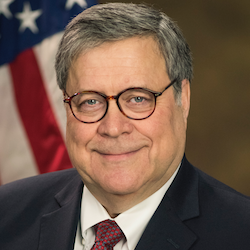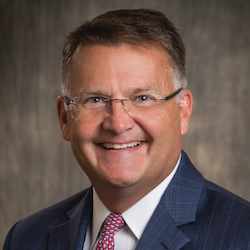
It is now a crime to hoard or price-gouge personal protective equipment, drugs and certain other health and medical resources that are scarce or threatened and needed to respond to the COVID-19 pandemic, U.S. Attorney General William Barr said Thursday.
The Department of Health and Human Services published a notice in the Federal Register, initiated by an executive order from the president, on Wednesday, listing the affected materials. The action became effective immediately. The list includes 15 types of materials, among them N95 and other filtering facepiece respirators, face masks and face shields, medical gowns and coveralls, surgical gloves, ventilators and portable ventilators, and drugs with the active ingredient chloroquine phosphate or hydroxychloroquine.
“As that is published, it is now a crime to hoard that in excess of your personal or business needs or for the purpose of selling it at above-market prices,” Barr said at a Thursday press conference.
A Justice Department task force is investigating leads and information about potential hoarding or price gouging, he said, adding, “They are the ones who are responsible for enforcing this and are in contact with all the US attorneys’ offices around the country.”
The notice is effective for 120 days, according to the posting in the Federal Register.
‘Misplaced hierarchy’ for PPE

It’s not hoarding or price gouging, but an apparent disparity of PPE that disturbs Laurence C. Gumina, CEO of Columbus, OH-based Ohio Living.
“Federal and state governments must address the disparity amongst hospitals and aging service providers and make sure that ALL clinicians are protected,” Gumina said in a post on the company’s website, which Ohio Living also shared with McKnight’s Senior Living. “We, aging service providers, are caring for the most vulnerable members of our society, 24/7, and we are last on the prioritization of PPE,” he added, citing a “misplaced hierarchy.”
Hospitals reportedly are “flush” with PPE inventory, Gumina said, while senior living and care nurses and nursing assistants re-use masks and gowns.
“From my perspective, as a board member for LeadingAge Ohio and LeadingAge – our national association, my heart bleeds for the pain and frustration my colleagues, and more directly their clinicians, are enduring across the country,” Gumina said.
Ohio Living has 13 life plan communities as well as other offerings. The company is the 18th largest not-for-profit multi-site senior living organization in the U.S., according to the 2019 LeadingAge Ziegler 200 list, and Ohio’s largest not-for-profit provider of life plan communities.
“If statewide providers like Ohio Living are feeling this pain, how are smaller, single site aging service providers able to effectively compete for supplies?” Gumina said.



